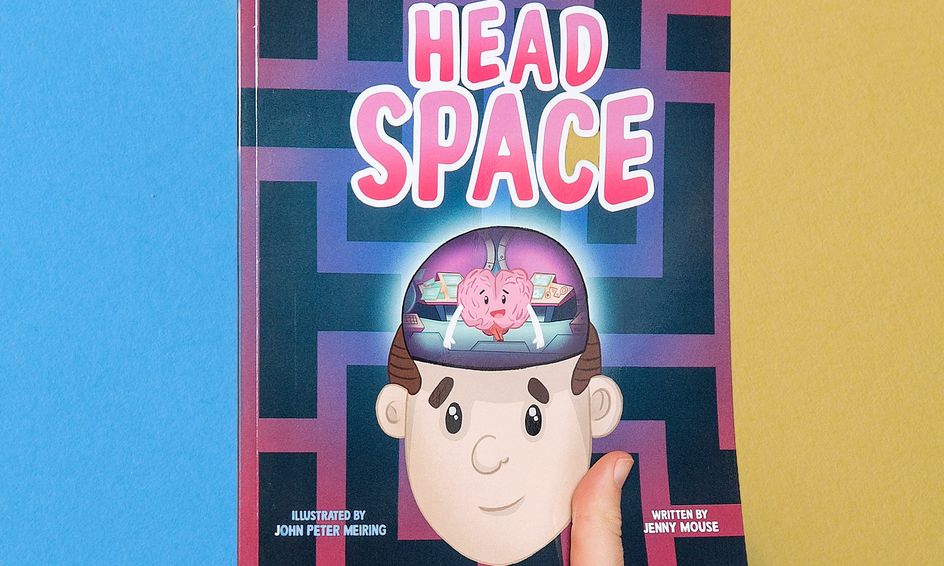Carol Dweck originally came up with the growth mindset definition in 1977. She describes it as having the belief that practicing and persevering will lead to improving one’s natural abilities.
People with a growth mindset not only do well when faced with challenges, but also often welcome them as learning opportunities.
On the other hand, people who often blame themselves for being incapable or a failure when they don’t perform as hoped have what’s called a fixed mindset. Having a growth mindset instead allows people to observe how they can grow from the situation.
Keep reading to find out how to help children in your life become more patient and compassionate with themselves!
Growth Mindset for Kids: How to Build Resilience in Children and Increase Their Self-Confidence
Does your child get frustrated easily?
Sometimes what seems to adults to be the simplest task can completely ruin a child’s mood. Just asking a young kid to zip up their coat or tie their shoes can sometimes send them into a fit of screaming “I can’t do it!”
Whether they’re a toddler trying to get dressed or an older kid practicing a sport, it can be hard learning a new skill!
And even if we know they are capable, sometimes adults end up helping out to make things go faster or smoother. Unfortunately, when we do the hard thing for a child, it can reinforce their mindset that they aren’t capable on their own.
Not feeling capable and struggling to believe that practice could ever help improve one’s skills is common among those with a fixed mindset.
Wouldn’t It Be Nice if Kids Understood That It’s Okay to Struggle During the Learning Process?
Not everybody has the same set of skills, and this is especially true across different ages. An important part of having a growth mindset is understanding that as we get older, our bodies change which allows us to do different things.
Think about it, it’s a lot easier for a six foot tall senior in college to dunk a basketball than it is for a four foot tall middle-schooler.
But it’s not just our height and strength that changes over time. The way our brain works is always changing depending on our environment.
This ability for our brain to develop is something called brain plasticity. Scientists once believed that the human brain stopped developing after a certain age. We now know that it is much more flexible than they thought!
And- the younger we are the more moldable our brains are! This is why it is so important to teach young kids about their brains. A growth mindset is easier to develop when one is young as they likely have fewer fixed, negative beliefs about themselves.
Sharing with Children: What is a Growth Mindset?
Guiding children to believe in their ability to learn and grow is not as simple as telling them that they’re capable of doing great things. Instead, it can take a combination of a few steps to help them grasp that concept. Read about these steps below and in more detail here.

Additionally, there are also several growth mindset myths that you need to be on the lookout for as they can easily cause confusion. Take a look at this blog post where you can read about common misconceptions about what it means to have a growth mindset.

- Teaching Kids About the Brain and Brain Plasticity
It can be hard trying to explain brain science to young kids, especially when you don’t completely understand it yourself. For this reason, resources like children’s books on the brain can be very useful in making this information more accessible.
If you would like a great place to start, check out my book, Brian the Brain Head Space: How Your Brain Works!

Books about how the brain works can raise a lot of questions for kids, and you may not always feel confident in your answers. That’s why I’ve created a one-time, online class to read about Brain the brain and talk about how we can all improve our brains. You can find this interactive course for 3-8 year olds on Outschool, an online learning platform I use to host many different classes.

- Introduction to Growth Mindset for Kids
After reading a book or two on some brain basics, children are better prepared for learning about fixed and growth mindsets.
Want to help your child learn how to manage their strong emotions when things get hard?
Then sign them up for the Growth Mindset for Kids course that meets every week for a month. This course lets them engage in hands-on learning activities about the brain and provides them with the tools to understand why “practice makes perfect.”

- Incorporate a Growth Mindset into Everyday Life
When a child around you completes a drawing or activity they were working hard on, what is normally your response?
Often you’ll say, “Yay, good job!” or “You’re so good at this!” right?
When we respond to children’s successes with this type of praise, we are hinting to them that it is the outcome of their effort that matters, rather than the effort itself.
That’s why practicing growth mindset attitudes during interactions with children is so crucial to helping them form their own healthy habits and positive responses to their efforts.
Similarly, when kids are working on a task that they aren’t quite able to complete, it often leads to a declaration of “I can’t do it!” Responding with “Don’t worry, you’ll get it next time” again emphasizes the success of something, rather than the work that led to it.
During these hard moments, the word “YET” has a powerful effect. Teach kids instead to say “I can’t do it yet!” to foster a sense of belief in their growing abilities when up against a challenge.
We can help them see the value in the learning process by focusing on how much time and effort they put into their work, rather than how their completed product looks.
Additionally, children are often watching adults to understand how they should act when they grow up. That means, if we are too embarrassed to make mistakes in front of them, they may believe it’s not okay to make mistakes at all. The belief can be strengthened if they see an adult who they admire talk negatively about themselves after making a mistake.
So, you should learn to apply the growth mindset outlook not only when interacting with children, but also when dealing with yourself.
If You Are Still Wondering “What Is a Growth Mindset?” Then It Can Be Hard to Include It as Part of Your Routine
To assist parents, educators, and whole families in learning how to develop a growth mindset and incorporate it into their lives, I’ve developed a couple of classes that are available per request.
Teachers and caregivers who are interested in gaining a basic understanding of the brain and what’s helpful in developing a growth mindset can request to enroll in a one-time, 50-minute course.
Looking to spend some quality family time learning and growing together? I also offer classes for the whole family to learn about how the brain works as well as develop a growth mindset together. These classes are fun and interactive for everybody in the family and take place once a week for four weeks. You’re able to request a time that works for your family here!
Want to learn more about how to include growth mindset in your routine sooner rather than later? Check out the talk I did for the Canadian Homeschool Conference on working growth mindset into your daily life. Click here to learn more and watch the FREE video playback for helpful tips!
For further reading check out:



interesting for a very long time
Pretty nice post. I simply stumbled upon your weblog and wanted
to mention that I have truly enjoyed surfing around your
blog posts. After all I will be subscribing to your rss feed and I’m
hoping you write once more very soon!